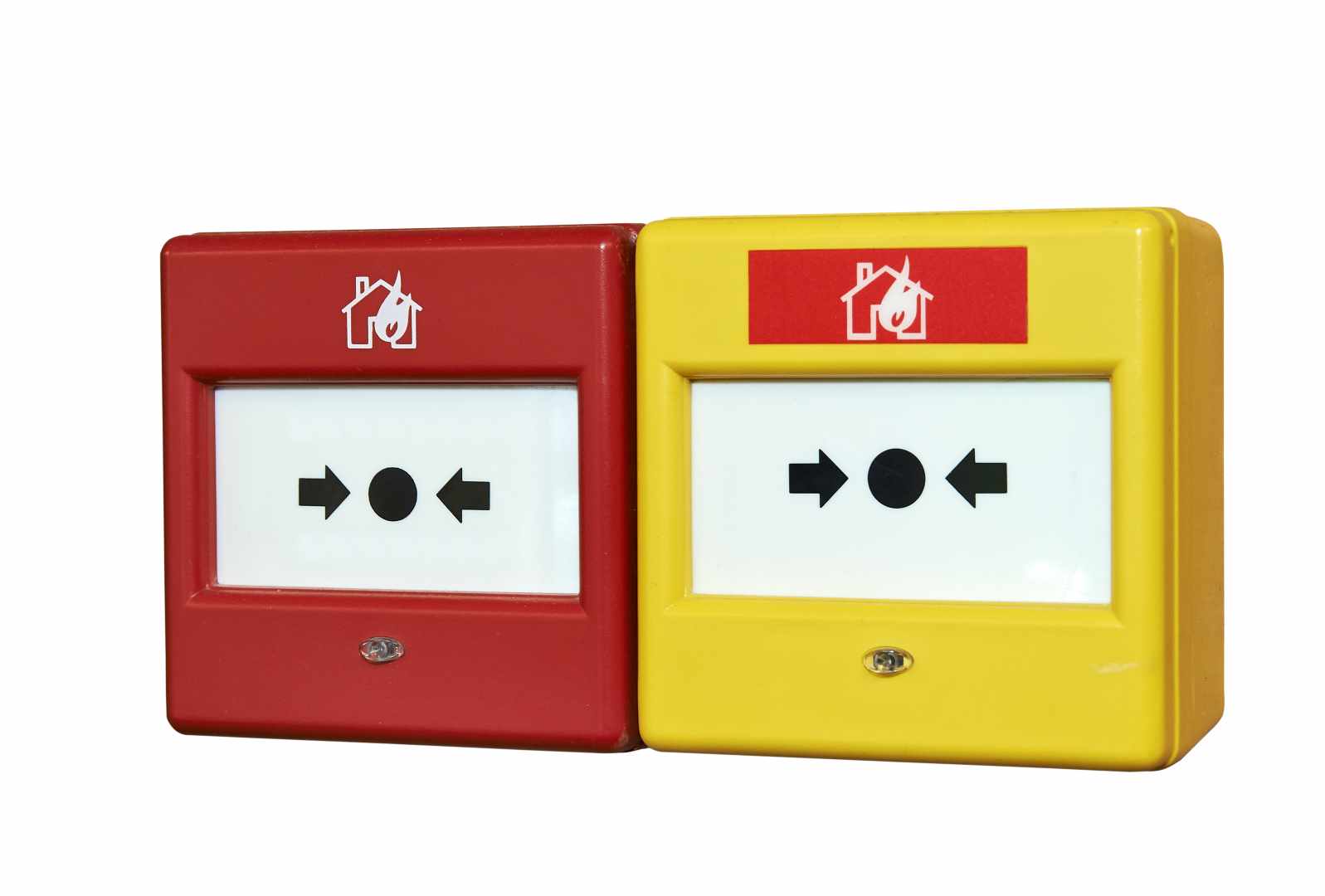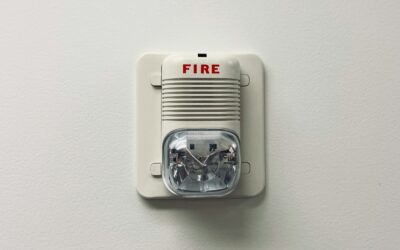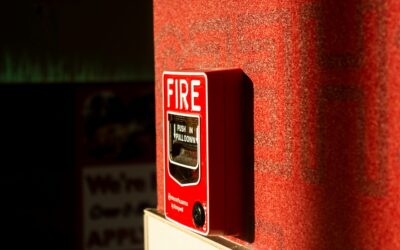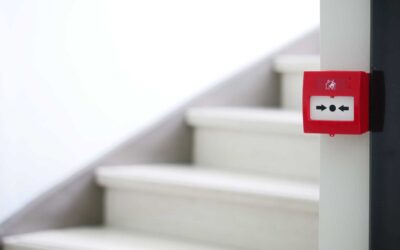When considering the installation of a fire alarm system for your building in the UK, it is crucial to understand the different categories or grades of fire alarm systems that are available and which will be the most suitable.
These categories are defined by the British Standard BS 5839, which provides guidance on fire detection and alarm systems. The grade of fire alarm system required for your building depends on several factors, including the building type, size, occupancy, and fire risks associated with the premises.
Understanding the fire alarm system grades is all-important to ensure maximum protection for your building and its occupants. The fire alarm system categories set out what might be the most appropriate system in different contexts, making it easier to install the right system for your needs.
What are the fire alarm system requirements and how do you find the right fire alarm system grade for your building?
What are the different grades of fire alarms?
Fire alarms come in grades ranging from A through to F, with A being the highest and F being the lowest. The lowest grades, usually understood as grades D to F, are usually suitable for domestic properties.
Commercial premises and public buildings will usually require a more complex fire alarm system. The installations at these premises will usually run from grades D through to A.
What are these fire alarm system grades and when might they be appropriate?
- Grade D
This is the most basic category and is suitable for small, low-risk buildings. It typically consists of standalone, battery-powered smoke detectors or heat detectors without any centralised control panel.
- Grade C
This grade is suitable for medium-sized buildings or those with moderate fire risk. It involves a fire alarm system with detectors interconnected to a control panel, enabling localised alarm activation.
- Grade B
This grade is commonly used in larger buildings with higher occupancy or increased fire risks. It includes a fire alarm system with detectors and manual call points interconnected to a control panel. The control panel allows zonal identification of activated devices.
- Grade A
This is the highest grade and is typically required in more complex buildings, such as large commercial or public premises. It involves a fully integrated fire alarm system with sophisticated features including multiple detection zones, a central control panel, and comprehensive fire alarm management.
The selection of the appropriate grade depends on factors such as building size, occupancy, fire risks, and regulatory requirements. It is important to consult with experienced fire safety system specialists to determine the most suitable grade of fire alarm system for your specific building.
What are L1 L2 L3 fire alarm systems?
L1, L2, and L3 are categories or levels of fire alarm systems used in the UK. Here is a brief guide to each of the three categories.
- L1 Fire Alarm System
An L1 fire alarm system is the highest category and offers the most comprehensive coverage. It will typically be installed in buildings where occupants require the earliest possible warning of a fire, such as high-rise buildings, shopping centres, or complex industrial premises. It provides automatic fire detection throughout the entire building including all rooms, corridors, and compartments. It incorporates a wide range of detectors such as smoke detectors, heat detectors, and flame detectors to ensure early fire detection.
- L2 Fire Alarm System
An L2 fire alarm system is suitable for buildings with specific fire risk factors or areas that require enhanced protection. It provides automatic fire detection in defined parts or zones of the building. The zones are typically determined based on factors like fire hazards, occupancy, or critical areas. An L2 fire alarm system may include detectors, manual call points, and alarm sounders in the designated zones. Other areas of the building may have a lower level of fire detection coverage.
- L3 Fire Alarm System
An L3 fire alarm system provides less coverage and will typically be found in smaller or lower-risk buildings where comprehensive coverage is not required. It provides detection in escape routes and circulation areas such as corridors, stairways, and lobbies. An L3 system may use a combination of detectors, call points, and sounders to provide fire detection and alarm coverage in these key building areas.
What is a Grade D LD3 fire alarm system?
A Grade D LD3 fire alarm system is a combination of fire alarm grades and categories:
Grade D refers to a basic level of fire alarm system. It is typically suitable for small, low-risk residential buildings. Grade D fire alarm systems use standalone, battery-powered smoke detectors or heat detectors that are not interconnected to a central control panel. Each detector operates independently, and when triggered, it activates its own alarm.
D3 is a coverage category that refers to the minimum level of coverage required for a Grade D fire alarm system in a building. In an LD3 fire alarm system, detectors are required in all circulation areas that form escape routes such as hallways and landings.
What is a Grade D1 fire alarm system?
A Grade D1 fire alarm system will feature one or more mains-powered detectors, each with a standby, tamper-proof battery-powered supply.
What is Grade D1, D2, Category LD3?
A Grade D1 fire alarm system will feature one or more mains-powered detectors, each with a standby, tamper-proof battery-powered supply.
A Grade D2 fire alarm system comprises one or more detectors connected to the mains power supply, and each detector is equipped with a backup power source in the form of a replaceable battery or batteries.
Category LD3 entails the installation of fire detection devices in all circulation areas that form escape routes within a dwelling. This typically includes areas like hallways, corridors, and landings. The purpose of LD3 coverage is to ensure that early detection of fire is provided in key areas through the placement of suitable fire detectors.
What is an L3 or L4 fire alarm?
A category L3 fire alarm system is designed to alert occupants throughout a building, extending beyond the room where the fire originates. Its purpose is to provide early warning so that occupants can safely navigate escape routes such as corridors and staircases before they become filled with smoke. By detecting the fire and activating alarms in key areas, the L3 system helps ensure timely evacuation and enhances the chances of a swift and safe exit for everyone in the building
A category L4 fire alarm system primarily focuses on installing detectors along designated escape routes such as hallways, stairwells, and circulation areas, rather than individual rooms. L4 systems are commonly employed by businesses operating in low-risk environments where swift evacuation is feasible in case of a fire.
When deciding between an L3 and L4 fire alarm system, several factors should be considered. These include the occupancy of the building, the results of a fire risk assessment, the size and layout of the building, the estimated evacuation time, and compliance with regulatory requirements.
What is an L4 fire system?
As discussed above, a category L4 fire alarm system is a type of fire detection and alarm system that focuses on providing coverage along a building’s escape routes. Rather than individually monitoring every room, a category L4 fire alarm system places detectors in key areas such as hallways, stairwells, and circulation areas. This setup ensures that occupants are alerted to potential fire hazards as they move towards safe exits.
What is fire alarm system grade D LD2?
A fire alarm system with Grade D LD2 refers to a specific combination of fire alarm system grade and coverage category. A Grade D LD2 fire alarm system is a basic fire alarm system suitable for residential dwellings with a specific level of coverage.
Grade D refers to a basic level of fire alarm system. It is typically suitable for small, low-risk residential buildings. Grade D systems use standalone, battery-powered smoke detectors or heat detectors that are not interconnected to a central control panel. Each detector operates independently, and when triggered, it activates its own alarm.
An LD2 system requires detectors in all circulation areas that form escape routes such as hallways, corridors, and landings, as well as in high-risk rooms, typically including the living room, kitchen, and habitable rooms in daily use.
What is the difference between L2 and L3 fire alarm systems?
The choice between a category L2 fire alarm system and a category L3 fire alarm system depends on various factors such as the size and layout of the building, occupancy levels, the presence of fire hazards, and compliance with regulatory requirements.
A category L2 fire alarm system has extensive coverage, providing enhanced protection within specific areas or zones of a building. The focus of an L2 system is to prioritise fire detection in zones that are deemed more critical due to factors such as higher fire hazards, greater occupancy, or increased importance to the overall safety of the building.
Contrasting with an L2 system, an L3 fire alarm system places its primary emphasis on fire detection in escape routes and circulation areas. These areas typically include corridors, stairways, lobbies, and other pathways essential for safe evacuation during a fire incident.
The primary objective of an L3 system is to ensure early detection and timely warning in these key areas, facilitating the safe movement of occupants. Areas outside these specific zones may have a lower level of fire detection coverage within an L3 system.
What is a Grade C LD2 fire alarm system?
A Grade C LD2 fire alarm system is a higher-level fire alarm system commonly used in buildings with more complex layouts or higher occupancy. It features interconnected devices including control panels, detectors, manual call points, and alarm sounders. The LD2 coverage category specifies the installation of detectors in escape routes and high-risk rooms within a domestic dwelling. The aim is to provide comprehensive fire detection and early warning throughout the dwelling to facilitate safe evacuation in case of a fire.
What is a Grade A L2 fire alarm system?
A Grade A L2 fire alarm system is a top-tier fire alarm system commonly used in larger or more complex buildings. It incorporates advanced features and comprehensive coverage to ensure effective fire detection and alarm capabilities. The L2 coverage category specifies the installation of fire detection and alarm devices in all escape routes, circulation areas, and high-risk areas of the building. Grade A systems are used where a sophisticated level of protection and control is required. These systems involve the integration of fire detection and alarm devices and offer comprehensive coverage, advanced features, and extensive control capabilities.
What is a Grade C fire alarm?
A Grade C fire alarm system offers an intermediate level of protection and control suitable for buildings with a moderate level of complexity and fire risk. One of the key features of a Grade C fire alarm system is its interconnectivity. Multiple fire detection and alarm devices within the system are interconnected to a central control panel, allowing for centralised monitoring, control, and coordination.
Specialist advice and installation from Protive Security
It’s important to ensure that the design, installation, and configuration of your fire alarm system comply with relevant fire safety regulations and guidelines to ensure optimal performance and occupant safety.
At Protive Security & Installation Ltd, we have over two decades of experience in designing and installing optimal fire protection systems for domestic and commercial buildings.
We can assess your property and advise of the grade and category of fire alarm system that would be most appropriate.
Contact us to find out more about our fire alarm system design and installation service





